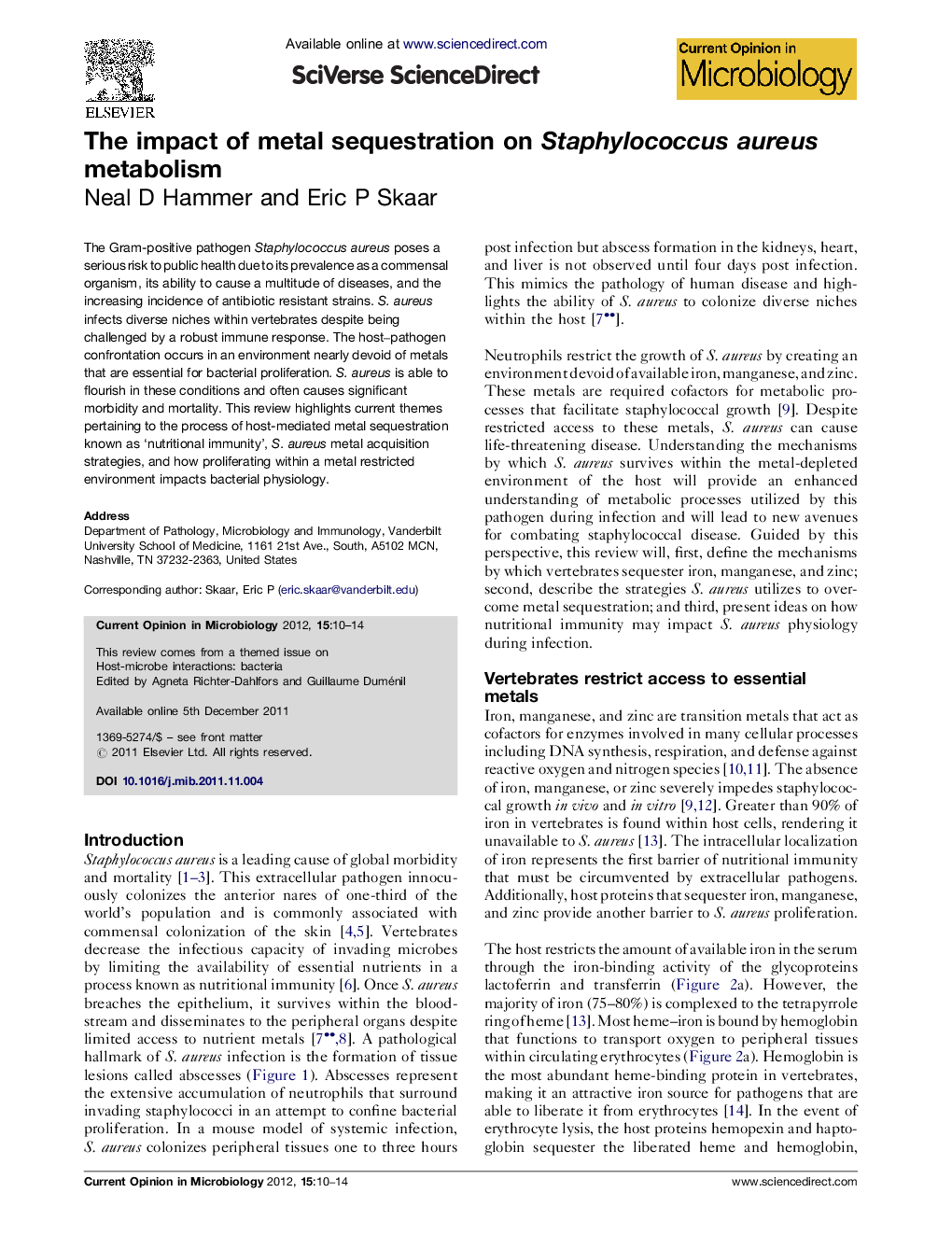| Article ID | Journal | Published Year | Pages | File Type |
|---|---|---|---|---|
| 3399184 | Current Opinion in Microbiology | 2012 | 5 Pages |
The Gram-positive pathogen Staphylococcus aureus poses a serious risk to public health due to its prevalence as a commensal organism, its ability to cause a multitude of diseases, and the increasing incidence of antibiotic resistant strains. S. aureus infects diverse niches within vertebrates despite being challenged by a robust immune response. The host–pathogen confrontation occurs in an environment nearly devoid of metals that are essential for bacterial proliferation. S. aureus is able to flourish in these conditions and often causes significant morbidity and mortality. This review highlights current themes pertaining to the process of host-mediated metal sequestration known as ‘nutritional immunity’, S. aureus metal acquisition strategies, and how proliferating within a metal restricted environment impacts bacterial physiology.
► The vertebrate host sequesters metals in an effort to reduce bacterial growth. ► Metal depletion reduces bacterial growth. ► S. aureus utilizes a multifaceted approach to overcome this metal sequestration. ► The staphylococcal pathways that receive host-metals are unknown. ► S. aureus utilizes host metals to maximize survival during pathogenesis.
